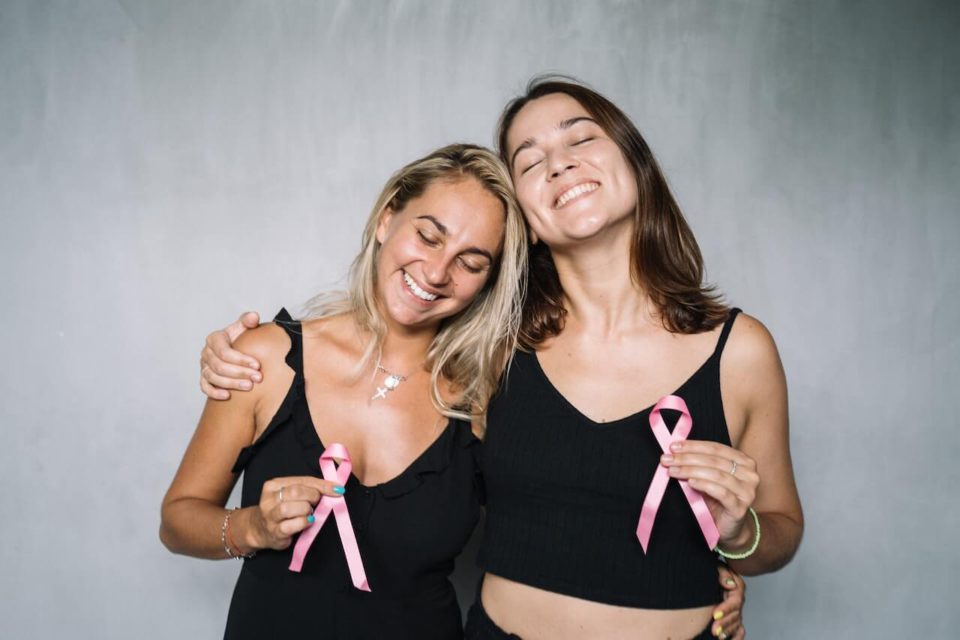

As we enter the final days of Breast Cancer Awareness Month, we are reflecting back on the lessons we’ve learned this month from our patient experts and the wider breast cancer advocacy community.
We asked the following questions of our experts:
While there is no denying that Breast Cancer Awareness Month (BCAM) has played a significant role over the past two decades in raising public awareness of breast cancer, there is nevertheless growing criticism of its off-balance approach to awareness-raising, with many key messages becoming lost in a sea of “pink-washing.”
Penny Rutterford stated that many in the community “are tired of the ‘pink-washing’ of our disease.” She also takes issue with the “fighter narrative [which] can make us feel blamed when our disease progresses.”
Another element missing from the current BCAM narrative is the assumption that breast cancer is one disease. “When we get our own diagnosis it really can come as a shock that there are so many treatment and surgical choices,” she said.
Diagnosed with late-stage invasive lobular breast cancer in 2015, Siobhan Freeney, who campaigns for essential breast screening and early detection of breast cancer for women with dense breasts, also emphasised the fact that not all breast cancers will present in the same way. “Invasive lobular breast cancer, the second most common type of breast cancer is not often spoken about and sometimes women are not aware of the signs. It doesn't always present as a lump, and is frequently overlooked on mammograms, particularly in women with dense breasts,” she told us.
Rosine Mucklow spoke about the diversity of experience in our breast cancer stories. “Not one breast cancer narrative is alike- our stories are like individual pebbles on a beach,” she noted. “From a distance, they all seem similar, but from up close they reveal many different shapes, sizes and colours."
Casey Quinlan pointed out that the message of early detection, a cornerstone of BCAM, while important, fails to account for high recurrence rates. “More research into recurrence is deeply necessary,” she stressed.
While we may not wish to think about the possibility of recurrence, it is a reality that is largely missing from the BCAM story, except for one day - 13 October - set aside to raise awareness of metastatic breast cancer (MBC). “One day,” pointed out MBC patient, Kristie Konsoer, “that is usually glossed over because it isn’t pink or happy is not enough. People need to know that MBC is the cancer that kills relentlessly. It is a tragic part of the narrative, but we can do so much more to bring it and research for it into the light.”
MBC patient Melissa Holzer agreed that “metastatic breast cancer gets lost in the sea of pink that is October”, calling it, “the not-so-pretty-in-pink stepsister of the ‘good kind of breast cancer’ that no one wants to acknowledge.”
Like Casey and Kristie, Melissa calls for “more focus on metastatic research to truly make a difference for the metastatic community. Without a cure, all the early detection and awareness in the world is not saving lives. We are the forgotten, the misunderstood and the betrayed and over 40,000 of us are dying each year as we hold hope for a cure.”
“Breast cancer requires the patient to become fast-tracked in understanding treatment and surgery options,” explained Terri Coutee, a passionate advocate of shared-decision making in healthcare. “This is why patients and healthcare providers should be team members sitting at the table together to engage in discussion to decide what is best for the patient.”
In answering the question of diversity, Casey believes that “simply flattening the access curve would be outstanding - making sure that every person diagnosed with breast cancer, at any stage, has access to testing and treatment options that work best for that person.”
Megan-Claire Chase feels strongly that the pharmaceutical industry has been missing the mark when it comes to diversity and representation in clinical trials. “Pharma should first acknowledge it has been missing the mark and show determination to make sure diverse populations are always part of the conversation by including our voices during the beginning phases of the clinical trial process,” she stated. “Widen the criteria and revamp the language used in trial designs and other paperwork that is currently offensive and racist.”
Megan-Claire also thinks that not enough is being done to reach Hispanic and Latino communities. “If everything is always written in English,” she pointed out, “pharma is missing a huge opportunity to connect with the Hispanic and Latin community so they can understand options and resources.”
Penny reminded us again that breast cancer is not just one disease. “Breast cancer is many different diseases and those of us who get diagnosed with it are just as diverse” she said. “When researching our disease or seeking help with treatment we need to see ourselves represented. From my experience the images and case studies I see and read don't really represent the population.”
While Penny recognises this is a challenge to address, it is nevertheless important to address it. “Seeking out patient voices and case studies from a range of backgrounds, ethnicities, genders, progression helps in some small way to address this”, she advised. “Patients have experience of finding support systems where they feel comfortable, are represented and which meet their personal circumstances - companies can learn from them.”
Not only is breast cancer more than one disease, but it is also not confined to women. Men get breast cancer too, as male breast cancer advocate, Rod Ritchie pointed out. “Unfortunately not enough people understand that breast cancer is a genderless disease. While the pink charities are good at raising funds for awareness and supporting women at the early stages, they are neglecting late-stage patients and men of all stages,” he said. “Pharma needs to step in here and spread the word about the diversity of the disease, including its types, sub-types, and ethnic differences. Every day, my skills as a patient advocate and social media influencer are directed to these ends.”
“True co-creation lets everybody in a room become creative about a subject they feel close to." - Rosine Mucklow
How do you know what patients need unless you go directly to the source themselves? How can you know the best way to communicate with them?
“Until we are patients ourselves it's hard to appreciate what language to use around breast cancer,” remarked Penny. “How does it really feel to find yourself as a breast cancer patient? When companies co-create with patients right from the start it is easier to hit the right and impactful note with communications. Because as patients we know what does and doesn't work for us.”
This approach is the best way to start creating tailored patient-centric solutions, believes Allie Moon. “By co-creating with and integrating the patient voice from the start - listening to the needs, experiences and concerns of those who truly know what it’s like to live with the disease - will ensure tailored patient-centric solutions,” she emphasised. “This will ultimately improve the quality of patient experiences, care and outcomes.”
Jennifer Douglas noted that “patients are at the heart of health solutions.” “Pharmaceutical companies that ask patients to participate and offer their perspectives before, during, and after the creation can better tune their projects to meet the needs of the patients they are serving,” she said. “By engaging with patients from the beginning, companies can better understand what is working and what could be improved earlier in the product development cycle.”
When it comes to clinical studies, Casey is adamant that patient involvement “needs to start from the scientific question that kicks off clinical research, all the way to communicating the results of that research.” Quoting “Nothing about me without me”, Casey insisted that patients must be included “from beginning to end in all medical science.”
Both Casey and Penny spoke to us about the professional skills they brought to the co-creation process, beyond their patient experience. Casey brings “more than two decades of experience in gathering news stories to my work now in driving toward better health and care for all humans.” She believes that “getting all the stories - from people-called -patients, doctors and nurses, and clinical researchers - will help create better questions for research, and better treatment for patients who need it.”
For Penny, it is her communications background which she is keen to apply to co-creating campaigns and communications that really resonate with patients. “I often work and volunteer as a patient advisor with breast cancer charities and organisations to devise impactful campaigns,” she told us, “be they digital, print or broadcast. This may be as a panel member, collecting patient voices, devising design briefs, or writing clear and understandable copy.”
At merakoi, the patient as expert is at the core of the work we do. We know that patients are more than their disease. They are professionals who bring a wealth of experience to the work they do to improve the lives of those in their communities. We are so grateful to Allie, Siobhan, Marissa, Casey, Penny, Megan-Claire, Rod, Rosine, Kristie, Jennifer and Terri for taking the time to share their thoughts with us this Breast Cancer Awareness Month.

✕